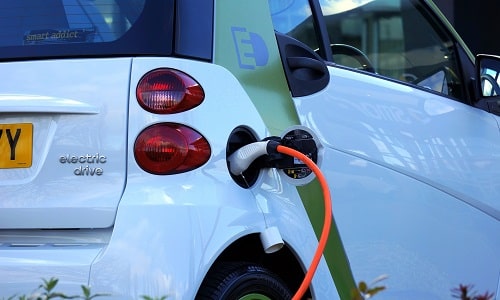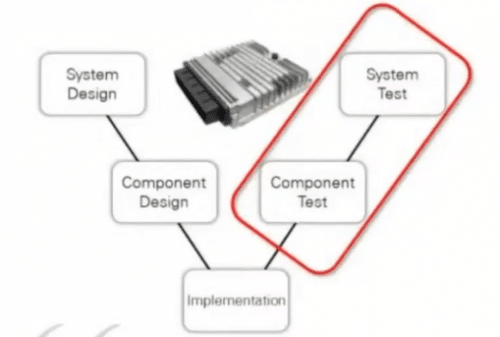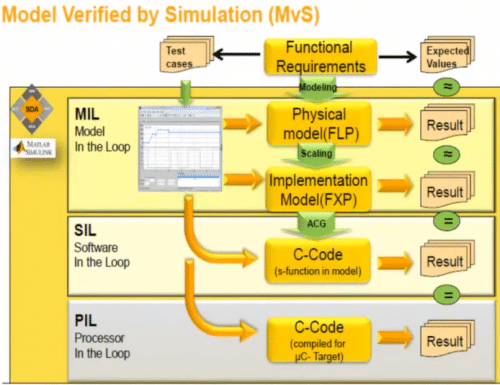The Make In India initiative promises opportunities for many. For the Indian automotive industry, it has opened new avenues to leverage technological advancements and compete on a global level

An electric vehicle (EV) uses one or more electric or traction motors instead of traditional fossil fuel for propulsion. There are generally four types:
- Battery EV
- Hybrid EV
- Plug-In Hybrid EV
- Fuel Cell EV
The importance of an EV can be judged from the fact that it will play a pivotal role in transforming the environment and global economy in the next two decades.
In order to manufacture a vehicle, the setting up of a prototype to the end cycle nearly takes around 7 years. Several steps include:
- Concept Design
- System Simulation
- Detailed Design & Development
- Prototype Testing
- Design Release (Pre-Release)
- Mass Production
Current EV Situation In India
EV market penetration is only 1 per cent of total vehicle sales in India, out of which, most are dedicated to sales of electric two-wheelers. The government of India has set a plan to introduce nearly 30 per cent of EVs on Indian roads in the future. As of now, there are only 150 charging stations in the country, which the government aims to increase by sanctioning 2636 charging stations that will be set up across 62 cities in India. This will also help reduce the range anxiety to a considerable extent. Many Indian startups along with some other manufacturers have come up with a small number of EVs for commercial usage that are ready to hit the Indian roads.
Major Indian EV startups are:
- Ather Energy – Electric scooters
- Yulu – Electric cycles
- Ola Electric – E-rickshaws, autos and cars
- BattRE – Electric scooters and cycles
- SmartE
What India Needs To Focus
India faces several challenges in setting up R&D centres with lack of awareness being one of them. To achieve the Make In India objective, a strong capacity of R&D must be present and appropriate funding should be arranged and provided through corporate companies/PSUs. This brings us to startups involved in the EV industry. A model that brings together IITs, young and talented startups, private manufacturing and CSR could be put in place. Finally, the government should take certain steps regarding:
- Rolling out incentives to the consumers as well as manufacturers/traders of EVs in the form of tax benefits/discounts
- Gradual phasing-out of ICE vehicles and promoting electric vehicles
- Facilitate rapid development of charging infrastructure. Installation of chargers should be allowed on parking lots and any public charging space
Norway is the leading country when it comes to no. of EVs in the market (33%). This means that out of every 3 vehicles sold, 1 is an electric vehicle. Some major global startups involved in EV development are:
- Lavelle Bikes (London)
- Helix Motors (Los Angeles)
- Seres (Greater Silicon Valley)
- Tarform Motorcycles (New York)
- Silverwing (Amsterdam)
Some of the techniques that are carried out by noted automotive companies, which can also be implemented to boost the automotive industry in India are given below.
The V-Life Cycle
A validation and verification (VnV) engineer is generally responsible for finalising the design of an autonomous vehicle.

The left-hand side of the above diagram is related to the entire system development, which can be a system design, hardware design or software design. The right-hand side is about testing where system testing or component system. Depending on company to company and their work scope, the V-model can be customised. The above represents a fixed structure with which the design and testing can be done in parallel. After completing the steps mentioned, that is, system design, component design, system test and component test, the final step of vehicle implementation takes place.
Different Testing Methodologies

A VnV engineer has to often use such techniques for testing purposes.
- Model In the Loop (MIL): It refers to the kind of testing wherein the accuracy of a control system gets verified. It means that the model is simulated in the modelling framework without any physical hardware components. MIL testing is done at the early stages of the development cycle.
- Software In the Loop (SIL): It concerns validating the behaviour of the generated code related to MIL. The embedded software is tested within a simulated model but without any hardware.
- Processor In the Loop (PIL): In this, the testing is done to validate the referenced model by generating production code. It is cross-compiled and executed on a target processor or an equivalent instruction set simulator. This type of testing can reveal faults caused by the target compiler or by the processor architecture.
HIL System
Another methodology used for testing is known as Hardware In the Loop (HIL). Industrial testing practices include mass production testing and prototyping testing. When the ECU has been manufactured, it has to be soon tested so that it can go for mass production. For that, there are end-of-line test setups or HIL setups. To check the operation of a vehicle in an environment, it is simulated in a HIL system that gives around 80% – 90% accurate test results. However, some cases cannot be tested on HIL. For that, testing is done on the road. The Advantages of testing on HIL are:
- Consumes less time than road testing
- Saves cost of testing
- Allows ease of testing in nearly every scenario
Future Roadmap
With respect to EV adoption in India, there is an uphill task. Besides awareness, certain policies and schemes need to be implemented by both EV companies and the government. Another factor that can accelerate EV development in India is by nurturing the talents of engineering students wishing to enter the automotive industry and encouraging EV startups to implement innovative techniques for their overall growth.
The article is based on the talk Advancement in Automotive World: ADAS and Career Prospects by Mehul Garg, Specialist – ADAS & EV Systems, Mercedes-Benz, presented at the June edition of Tech World Congress 2021.








